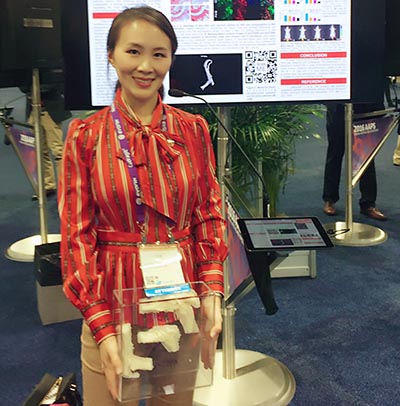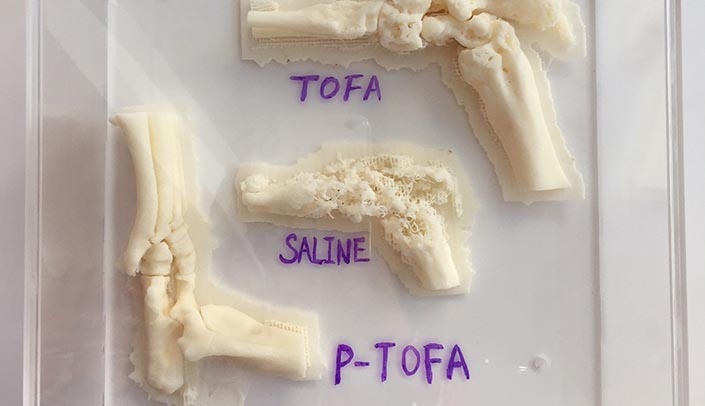From modeling the bones of rats with rheumatoid arthritis to the brains of teenagers, the McGoogan Library’s makerspace is available for all sorts of academic uses.
 |
Xin Wei displays her 3-D printed “bones” at a national conference. |
“Individuals are welcome to come in for an orientation in the maker space, to learn how to work the machine and use the software to create 3-D printed items,” she said.
“We are happy to provide the makerspace to campus as a place to create prototypes.”
Xin Wei, a graduate research assistant in the College of Pharmacy, used the technology to enhance a recent poster presentation that detailed a potential treatment for bone destruction in rheumatoid arthritis.
“Using the 3-D printer, we could use a scan of the bone quality, and then reconstruct the images with a 3-D model,” she said. “It helped show the difference between the different treatment groups.”
Wei unveiled the 3-D models at a national meeting in 2016.
“The audience was amazed,” she said. “With my 3-D models, I could pass the images around, and the audience could see more directly the treatment outcome.”
Alex Wiesman, a graduate student in neuroscience at UNMC, used the printer to say thank you to a group of youngsters who had participated in a National Science Foundation research study.
The study, led by Tony Wilson, Ph.D., of the UNMC Department of Neurological Sciences, recruited around 100 kids aged 9-15 to examine brain development.
“We wanted to give a little prize to kids, and we thought something science related would be cool,” he said.
Researchers realized they could render each child’s individual brain with the 3-D printer using data from scans, so they presented each subject with their own “brain.”
“They loved it,” Wiesman said.
In fact, the researcher at first mailed the gifts to their subjects.
“But we’ve switched now to giving it to them on their visit when we can, because they enjoy it so much,” he said.
Whether students want to learn how to use the technology or faculty has a need to create something specific, the library will provide the space and materials, Glenn said. “This is supported by a gift specifically for this technology.”
The makerspace is on the sixth floor of the library and is open during regular library hours. Interested faculty, staff or students should contact Glenn or see the library’s website for more information.
